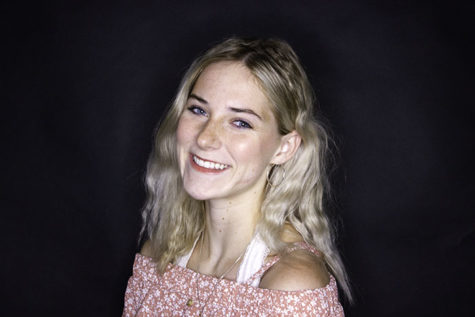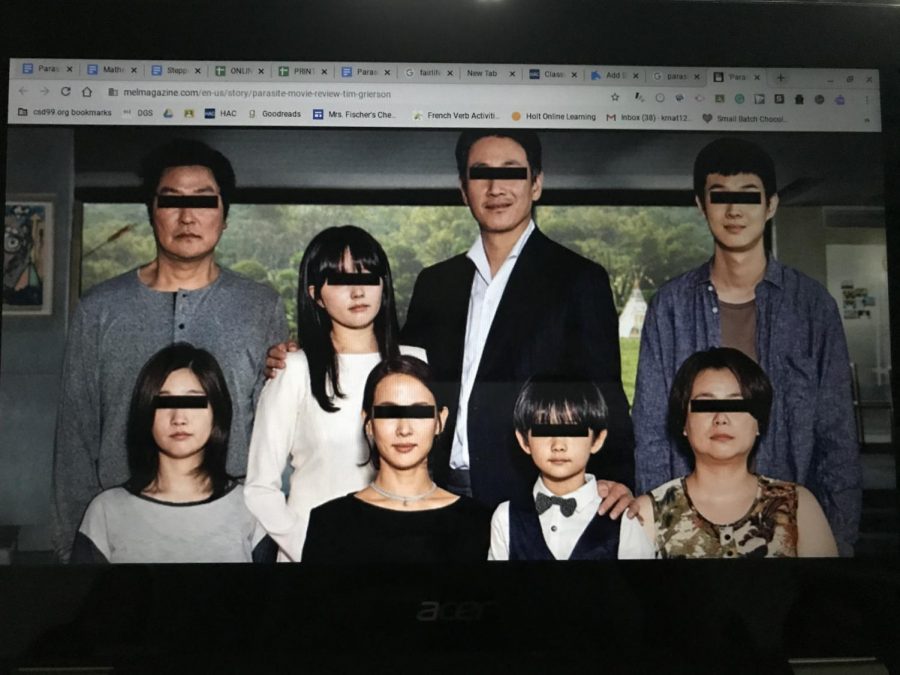‘Parasite’ rightfully sweeps award season
The Parks are surrounded by the Kims, as their family portrait is infiltrated.
Since the time the Oscars crowned Bong Joon-Ho’s “Parasite” with four honors, the movie has become a global sensation. Being the first non-english film to win best picture, the South-Korean thriller has become one of the most heavily-decorated movies of the past year.
The story follows the life of the Kim family, fighting against poverty and their station. The eldest child, Ki-woo, is given the chance to pose as an English teacher for the wealthy Park family. One by one, the Kims take over the jobs of the previous servants to try and get themselves to a place of financial equilibrium.
What makes the film so enthralling is the constant manipulation of genre. The movie starts as a light-hearted story of a family trying to make ends meet by outsmarting the upper class. The audience is able to sympathize with the Kims and want to see them succeed.
However, in the middle of the storyline, the plot shifts into something darker. Suddenly, a violent and tense thriller emerges, with a gut-wrenching twist that throws the entire film for a loop.
No longer is the movie a tale of perseverance, but one of desperate survival.
With class struggle being one of the driving forces in the movie, Ho’s visual exhibition of height silently supports a glaring commonality in the film. With the Kims living in a sub-basement, they are considered the lowest of the low on the social ladder. The Parks reside high up in the hills of Seoul, in a private and secluded paradise.
Every time a member of the Kim family makes their way to the Park mansion, they are literally and figuratively scaling the wage disparity, escaping their dingy home for a look into the lives of luxury. Their earnings seemingly propel them up while still remaining in an indentured station.
The visuals in the movie help to encompass the thematic elements of the film as well, as Joon-Ho’s cinematography keeps the viewers engaged.
To comment on the social hierarchy, he used physical levels to distinguish class, like the location of the family’s housing and places they often reside in. The camera is shot from up high when they are achieving their societal ambitions and low when things start to go south.
Another key element in the film was water and how it impacted those on the class divide. For the Parks who lived in a cushy mansion, a little rainstorm provided an opportunity for their son to play. For the Kims, it meant destroying their entire neighborhood and forcing them into crisis housing.
This once again highlights the disparities in the wealth gap, as the Parks simply shook off the night while the members of their help were scarred by the events.
When given these visual cues, the audience is plunged into the world of this struggling family, experiencing the desperation alongside them. “Parasite” provides an honest look into the world of the modern class divide and the familial bond. Joon Ho’s twists and turns make for one of the most engrossing films of our time.


